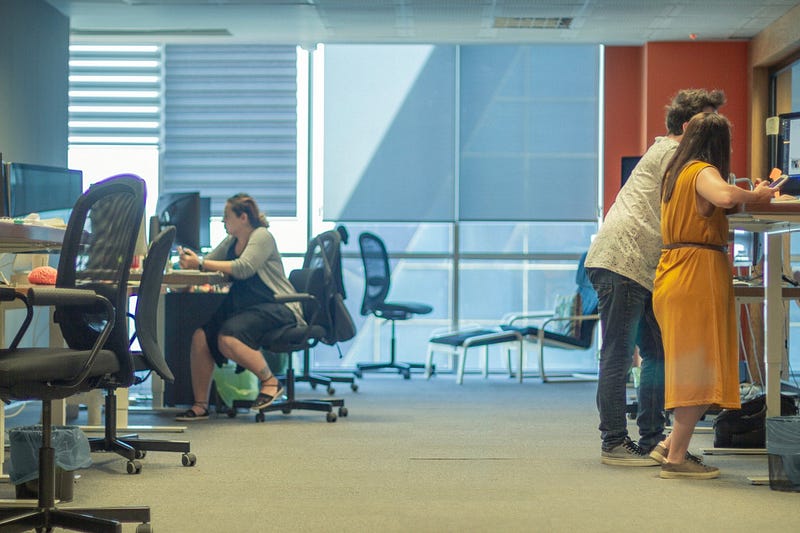Real estate is one of the largest and most valuable asset classes in the Asia Pacific

According to JLL, a property brokerage and consultancy, the total value of investable global commercial real estate is estimated to reach US$65 trillion by the year 2020, with the Asia Pacific (APAC) accounting for over 30 per cent of it.
The value of APAC real estate is expected to grow strongly alongside increasing urbanisation across the region. However, despite being a key driver of economic value creation in APAC, the real estate industry is still relatively slow in terms of technology adoption.
This is in contrast to the current disruptive trends of technology seen in multiple industries in the region, including finance, fashion, food and transport.
The value chain in real estate is complex and exhibits a high amount of information asymmetry. The industry involves multiple participants, the organisation of disparate information and highly administrative tasks.
Technology is particularly good at resolving such complexities through better data aggregation, identification of critical tasks, and organisation of workflows and processes. The convergence of technology and real estate is called proptech.
There is a significant opportunity for proptech startups in APAC given the thriving real estate market. Investors, as well as entrepreneurs, need to recognise how proptech can bring significant value addition to the APAC real estate industry.
How will proptech startups add value to the real estate industry?
1. Enabling information transparency and transactions
One of the key issues with real estate is information asymmetry, which has resulted in the role of property agencies, brokers and valuation agents seeking large ‘economic rents’ and working very often via word of mouth and using offline channels.
As marketplaces improve and innovate to deliver enhanced information transparency, the buying-selling and leasing-tenancy of real estate will move towards an enhanced online model where entire real estate transactions can be completed online.
We see commercial platforms such as GorillaSpace, a flexi-space tech brokerage, changing the way commercial spaces are leased by allowing landlords to flexibly provide small workspaces on a short-term lease to long term spaces for full-fledged tenants, all enabled online.
Also Read: This Echelon Asia Summit 2019 tickets giveaway will make you feel nostalgic
Hyper agency models such as Propzy, a hybrid real estate brokerage in Vietnam, not only provides property sales listings but also value add services on property due diligence as part of the online platform’s enhanced offering.
These proptech businesses are leveraging technology to automate paper workflows, provide transparent information to customers and facilitate better customer experience when shopping for a property, be it for personal accommodation or commercial workspaces.
2. Driving operating performance of real estate
As asset owners look towards improving operating performance and financial returns of their properties, proptech players focused on energy and environmental solutions, tenancy engagement and building management are key to creating long-term value uplift of a property.
Companies such as BBP, an energy efficiency management company based in Singapore, provide large scale monitoring solutions with cloud-based remote management of energy usage to lower overall utility costs for commercial properties.
This creates significant cost savings for property owners, translating to a better bottom line and potential uplift in property valuation. Asset management tech players such as Yardi provide solutions around data presentation and business analytics, allowing portfolio owners to have an overview of their entire property portfolio performance.
3. Shortening processing timelines and improving efficiency
Proptech can help eliminate challenges in areas of brokerage, mortgage financing, labour organisation and property management.
By using technology to process information, run operational workflows and assign tasks, real estate companies would have enhanced operational efficiencies with a reduced amount of labour directed to administrative tasks. This will not only reduce costs but will help create better workforce flexibility.
For example, Property Flow, a Thailand-based real estate software startup, provides real estate developers and agents with toolkits on a SASS basis to equip these players to focus on sales outcomes.
RealEstateDoc, a Singapore-based asset management solutions provider for the retail sector, have cloud-based technology suites that reduce the amount of headcount required to asset and tenant manage casual retail spaces, automating payments and lease agreements.
How proptech in Asia differs from the rest of the world
As seen in the past in other industries like e-commerce, fintech and ride-hailing, there is a reason for the existence of Asia-centric models.
This will be no different for proptech players that may adopt from successful models already being built in the US and Europe and localize these models for local distribution.
Language, cultural business practices, level of technology adoption and specific government regulations drive the need for tailor-made adoption across APAC markets.
How investors can help boost the industry
Venture capitalist firms that have the real estate domain expertise are in a prime position to help Proptech startups scale their technology and business aggressively in the region. With an underdeveloped market and large potential upside, an investor can provide significant value in terms of expertise and funding to build up the proptech industry.
Also Read: How online data is transforming market research
We see a synergy between ourselves and real estate companies as we act as a filter to identify high potential startups. We invest and help grow these startups to an appropriate stage for distribution into large corporates.
And, being early in the cycle means we are in pole position to help develop the proptech ecosystem across Asia.
APAC is already a thriving market for real estate and continues to show a strong appetite for new technology advancements. The proptech industry is likely to be in the spotlight in the next year as more eyes turn towards the growing real estate market and its strong potential for growth.
—
About Cento Ventures
Cento Ventures’ Proptech fund looks to invest in high potential startups across APAC to deliver products or solutions tailored for the APAC real estate sector. Cento Ventures takes a disciplined approach in selecting portfolio companies with a goal of developing regional winners. The investment team combines real estate domain expertise with regional VC experience to ensure a holistic approach to investment selection.
Cento Ventures is a Southeast Asian venture firm that focuses on identifying and making investments in growth markets based on data-driven reasoning and industry expertise from a multi-disciplinary team. With a pro-founder philosophy, we stay committed to helping our portfolio reach its true potential throughout the entire investment life cycle.
Visit us here.
Image by
e27 publishes relevant guest contributions from the community. Share your honest opinions and expert knowledge by submitting your content here.
The post Proptech is changing the face of real estate in Asia Pacific appeared first on e27.
















